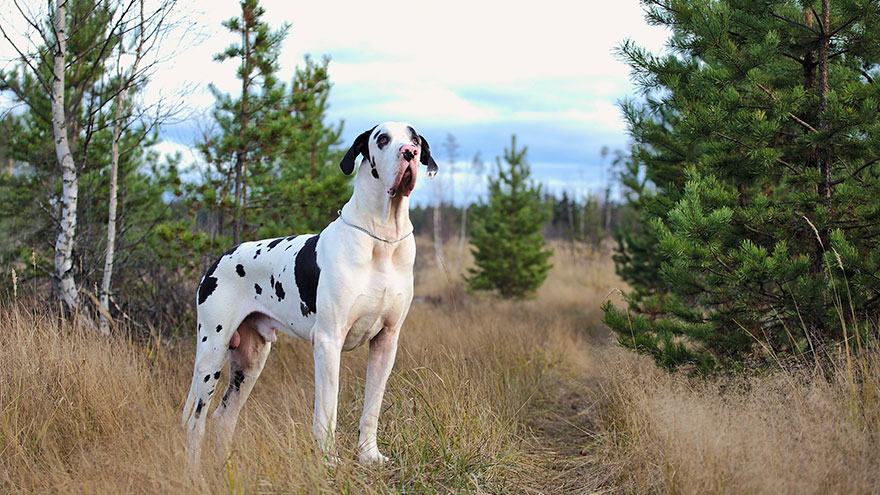How to Select a Great Dane
If you’re in search of a noble, friendly — and very large — dog who doesn’t require a great deal of exercise, a Great Dane can fill the bill. If you’ve done your research and believe a Great Dane is the right dog for you, the next step is selecting a puppy or adopting an adult dog.
The Great Dane Club of America provides advice about selecting a representative of this breed. It’s also the best site to visit for information on Danes and their well-regarded breeders.

Obtaining a Great Dane
The best way to purchase a Great Dane is from a reputable breeder. Good breeders don’t constantly have puppies available — you may have to wait a while. These are the folks who love the breed and want to improve it, so they’re probably not making much, if any, money from selling puppies.
The breeder will also decide if your lifestyle fits that of a Great Dane. She’ll want references from you and a home inspection. You can also ask the breeder for references from buyers of her dogs and follow up with them.
Look for dogs advertised as “home raised,” “show quality” or “working lines.” These are all positive signs that the breeder is seriously concerned about the quality of her dogs.
Then there are the places from which you should avoid obtaining a dog. These include:
- Those breeders advertising that Great Dane puppies are always in stock, and they can ship them anywhere. These are likely dogs who aren’t well-bred, and the breeders are more interested in making money than contributing to the health and welfare of the breed.
- Small or extra-large : Great Danes mean that the breeders are ignoring the breed standard. This can result in unhealthy animals with genetic issues.
- Unregistered dogs : Your puppy may look like a Great Dane, but is he really? It’s possible you’re paying top dollar for a mixed-breed dog.
Health Issues
The Great Dane is prone to various hereditary health issues, but there’s a way to avoid those problems when selecting your dog. Common breed health disorders involve the eyes, hips, heart and thyroid glands. Find a dog whose parents, grandparents and great-grandparents — if not more generations — have been evaluated and certified as healthy.
Don’t take the breeder’s word for it. Great Dane breeders should participate in the Canine Health Information Center database, supplying official evaluations from approved health registries. The CHIC regulations state that breeders must allow all evaluations, good or bad, listed in the database. You can access the database to find information about your potential dog’s genetic history. If the breeder doesn’t participate in the CHIC, that’s a red flag.
Warning
Although Great Danes make fine family dogs, as with many other large breeds, their lifespans are relatively short. Expect to have your Great Dane with you between seven and 10 years. That’s also something to take into consideration when adopting an adult Great Dane.

